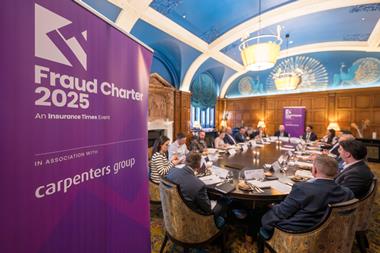With a slew of recent reassessments of involvement in the motor insurance market from insurers, what can we expect going forward?
By acting editor Yiannis Kotoulas
Taking a view over the motor insurance market of the past year or so, it seems that increasing competition and decreasing profitability are leading some players to reconsider their approaches.

Last month (26 June 2023), Ernst and Young (EY) warned that losses were expected to continue in the UK motor insurance market after the sector experienced its “worst performing year in a decade in 2022”.
Inflation and low premium rates were the primary cause of these losses, with an increase in the cost of materials, labour and energy battering profitability for firms running slim margins.
The latest Car Insurance Price Index from Confused.com and Willis Towers Watson (WTW), released earlier this week (19 July 2023), revealed the fastest quarter-on-quarter rise in average car insurance premiums since the index began – with the average price rising by 18% (£119) in Q2 2023.
Across the last 12 months, the index showed that comprehensive car insurance premiums had risen by 40%, with motorists now paying an average of £776.
WTW highlighted that this rise in costs continued to outstrip consumer price index (CPI) inflation, which sat at 8.7% in May.
Commenting on the continued increase in premiums, WTW’s UK head of property and casualty pricing, product, claims and underwriting Tim Rourke said: “Motorists are facing the sharpest acceleration in premium rates as insurers continue to grapple with a cocktail of rising costs.”
The factors impacting claims inflation include rising used car prices, more vehicle theft, longer repair times and higher wages, all of which are pushing costs above premium income and forcing insurers to play catch up by increasing prices, added Rourke.
Dominoes falling
As premiums rise sharply across the market to correct for losses, the first order impact of increased premiums has undoubtedly fallen on customers, heaping fuel on the fire of the cost of living crisis and necessitating hard decisions on what is affordable for many.
Read: Claims inflation drives ‘a major deterioration’ in UK motor market
Read: Briefing – Hard times for DLG, Admiral and Sabre, what are the shareholder challenges?
Explore more motor-related content here or discover other news analysis stories here
But hard decisions on affordability are not the sole purview of customers – it is increasingly clear that many insurers are reconsidering their involvements in an increasingly price competitive motor insurance market, with the first domino tile of inflation toppling to set up of a chain of events that could see the market shorn of many insurers.
Back in March, RSA Insurance announced that it would exit the UK personal lines motor market after conducting a “thorough review of its business”.
In its statement, the insurer noted that the motor market was competitive and required “significant scale to drive meaningful outperformance”.
The decision, while expected to represent the loss of around £120m of annual premium for the firm, was sound – the firm’s motor segement was operating at a combined operating ratio (COR) significantly above 100%, meaning the lost premium does not represent an operating loss.
Since then, further moves have materialised prompted by the same motivator of increased competitiveness and losses deemed unacceptable by insurer’s boards.
Last week, Zurich UK released a statement that detailed its plan to withdraw from regional and national panel broker distribution channels for its personal lines home and motor business and refocus efforts to concentrate on the high net worth market.
It seems many of the UK’s largest firms are singing from the same hymn sheet, with Zurich’s head of retail David Nichols echoing RSA in a statement that branded the UK personal lines market “intensely competitive”.
Zurich’s statement is indicative of what may become the future of the personal lines motor market, however.
Nichols explained: ”We’re a minor player in the home and motor personal lines market, with very small market share and a relatively low level of premium.
“This make us well positioned to refocus our strategy.”
It seems that scale or specialty in the market will be required to weather the ongoing storm, with the driving rain of claims inflation and the myriad other problems in the motor market likely to ward off underwriters in the sector not entirely committed as profitability becomes harder to achieve.
Depending on your perspective, this can be seen as somewhat of a realignment for the motor insurance market, with further exits or realignments expected.
However, for those that can hold their nerve, the prize is a large potential increase in market share.
What remains to be seen is which firms will fold – and which are all in.











































No comments yet